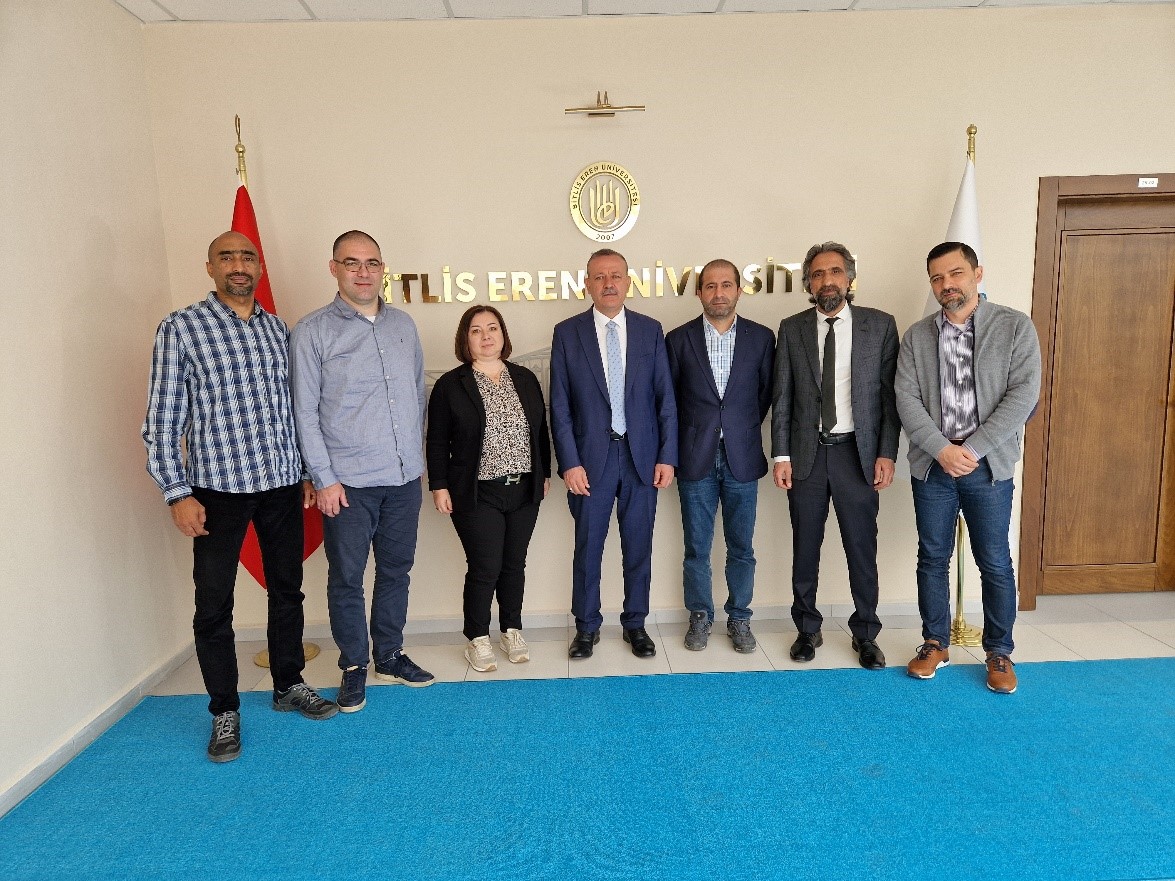As part of the three-year project Intelligent Methods for Structures, Elements and Materials – IM4StEM, implemented within the Erasmus+ programme Cooperation Partnerships in Higher Education., data collection for buildings in Bitlis was carried out in the period from 17 April 2024 – 23 April 2024.
With the participation of students from the Faculty of Engineering and Architecture, Department of Civil Engineering, Bitlis Eren University, the dynamic characteristics of the existing building stock in the city centre were collected. 17 students were involved in this data collection on buildings, which was carried out under the supervision of one professor from Bitlis Eren University, Prof Ercan Işık, Ph.D., one professor from the University of Transilvania, Assoc. Prof Dorin Radu, Ph.D., one professor from the University of Novi Sad, Assoc. Prof Borko Bulajić, Ph.D, and two professors from the University of Osijek, Assoc. Prof Emmanuel Karlo Nyarko, Ph.D., and Prof Marijana Hadzima-Nyarko, Ph.D.
Bitlis is a historical city on the Bosporus, which connects Eastern Anatolia with South-
Eastern Anatolia. It is located between 41°33′-43°11′ east longitude and 37°54′-38°58′ north latitude and is surrounded by mountains. The province of Bitlis is located in a seismically very vulnerable area. The province, which lies in the basin of Lake Van, is under the influence of earthquakes that can be caused both by faults in the province and by faults in the immediate vicinity. Earthquakes, which occur mainly in the provinces of Van, Muş and Bingöl, have a significant impact in the province. In the city centre ofBitlis, reinforced concrete buildings dominate the urban building stock. In the rural areas, the majority of the building stock consists of masonry buildings. Especially after the Van earthquake in 2011, an urban transformation process regarding reinforced concrete buildings started in the city centre and is still ongoing. While reinforced concrete buildings of medium height are generally favoured, the number of storeys and thus the building height of these few buildings has increased in recent years. However, the proportion of these buildings in relation to all buildings is quite low. It can be stated that TOKI, the official institution of the state in housing construction in Turkey, has made a significant contribution to urban change in the province. Many low-rise buildings with no irregularities were built by this institution. The low number of storeys, the lack of structural irregularities and the use of reinforced concrete shear walls in their construction mean that these structures have a very high level of earthquake resistance. Over the last 20 years, masonry construction in the city centre has been all but abandoned. The majority of the masonry buildings studied in this project are traditional Bitlis houses built in the masonry style. These structures were built by local craftsmen and labourers according to the wishes of the builders, without the use of engineering services.
News about the activity can be found under the official site of Bitlis Eren University:
